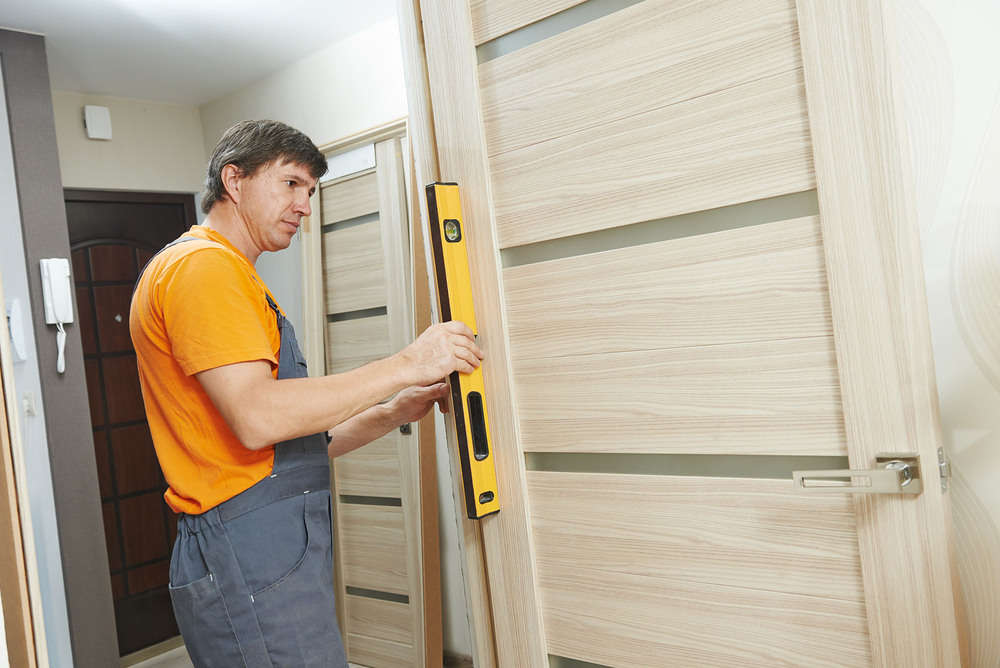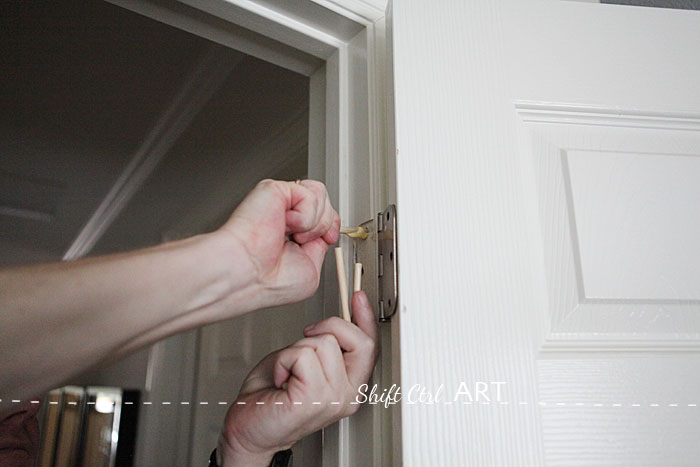Owning a home can be rewarding, however, repairs and maintenance are often unavoidable. As a homeowner, I understand the frustration when household items need constant fixing — sagging doors are no exception. In this article, we’ll provide you with actionable steps to help you alleviate this common issue and provide a better solution than slamming doors harder

Image: sensibledigs.com
Understanding Sagging Doors
A sagging door occurs when the hinges are no longer aligned with each other, causing the door to drop and become uneven. This misalignment can be a result of several factors, including loose screws, deteriorated hinges,膨胀的 moisture, and aging. Finding the underlying cause will help determine what types of repairs are necessary.
Signs and Initial Inspection
Spotting a sagging door is not difficult, but identifying the exact problem can be tricky. Before you grab a screwdriver, take the time to diagnose the cause. Here are a few signs to look for:
- Rub marks or scratches on the bottom of the door or the jamb
- Difficulty latching the door
- Gaps around the edges of the door
- Loose or missing screws
The Ultimate Guide to Fixing Sagging Doors
Once the root cause has been diagnosed, you can choose the best repair strategy. Follow these methods to adjust sagging doors back into shape:

Image: ahomefordesign.com
1. Inspect and Tighten the Screws
Loose screws are a common culprit of sagging doors. Using a screwdriver, tighten all the screws that hold the hinges in place. Ensure they are secure, but avoid overtightening to prevent stripping the screws.
2. Adjust the Hinges
Over time, hinges can become loose, leading to wear and tear. Take the door off the hinges and inspect them for any damage or rust. If damage is present, the hinges may need to be replaced. However, if they are in good condition, you can lubricate them with a dry lubricant or petroleum jelly, then reinstall them and adjust them accordingly.
3. Shim the Lower Hinge
For stubborn doors that refuse to stay level, try adding a thin shim beneath the lower hinge. This shim will help lift the door and promote its alignment. Use a piece of cardboard, a matchstick, or a construction shim specifically made for this purpose.
4. Fix a Warped Door
Moisture absorption can cause wood doors to warp and swell, leading to sagging. In this case, a different approach is required. Remove the door and place it on a flat surface. Then, check if it lays flat. If it rocks, place heavy objects along its length until it flattens.
5. Replace the Hinges or Door
If other methods have failed to resolve the issue, replacing the hinges or the door itself may be necessary. Examine the hinges for any cracks or warps; if they are severely damaged, they need to be replaced. Consult with a professional if you are unsure about the door’s condition.
Advice From Carpenters
According to professional carpenters, a trick they commonly employ is to use a longer screw when replacing stripped hinge screws. Longer screws provide a more secure hold and reduce the chances of recurring sagging in the future. Additionally, they recommend installing a hinge shim between the door and frame to remedy misalignments.
Additional Tips: Prevent and Maintain
Beyond repairs, maintaining your doors can prevent future sagging and extend their lifespan. Here are a few measures you can follow:
- Regularly inspect your doors and fix any loose screws promptly.
- Lubricate the hinges periodically with a dry lubricant to minimize friction.
- Avoid exposing wooden doors to excessive moisture.
- If the sagging is due to a shifting foundation, consult a structural engineer.
Frequently Asked Questions (FAQs)
-
What are the most common causes of sagging doors?
Common causes of sagging doors include loose screws, worn-out hinges, moisture-related expansion, aging, and shifting foundations.
<li>
<h3><q>How can I tell if a door is sagging?</q></h3>
<p><q>Look out for rub marks or scratches at the bottom of the door or jamb, difficulty latching the door, gaps at the edges of the door, and loose or missing screws</q></p>
</li>
<li>
<h3><q>What tools do I need to fix a sagging door?</q></h3>
<p>The required tools may vary depending on the underlying cause, but commonly, you'll need a screwdriver, lubricant, shims (thin pieces of card or wood), and possibly replacement hinges or a new door</p>
</li>
<li>
<h3><q>When should I seek professional assistance?</q></h3>
<p><q>If tightening the screws, adjusting the hinges, and other DIY methods do not resolve the issue, and/or the door has a severe warp or cracks, it's advisable to contact a carpenter or handyman for professional repair or assessment</q></p>
</li>How To Fix A Sagging Door
Conclusion
Fixing a sagging door can seem like a daunting task, but following these methods and expert advice empower homeowners to approach the problem with confidence. By understanding the underlying causes, selecting appropriate repair techniques, and implementing proactive maintenance measures, you can restore the functionality and aesthetic value of your doors. Remember, the satisfaction gained from tackling home repairs empowers you to care for your living space and maintain its beauty.